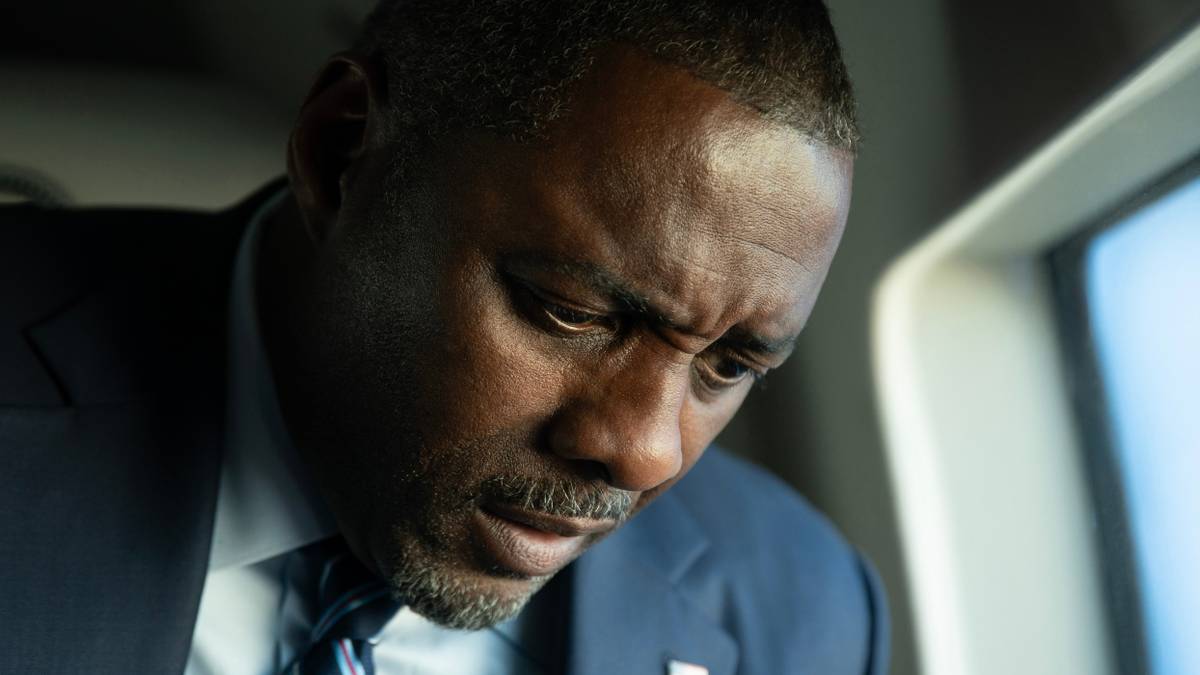Kathryn Bigelow is no stranger to causing a stir with her movies. After all, this is the pioneering female filmmaker who forced her way into the boys’ club of action movie directing with 1991’s Point Break. This is the woman who was accused of condoning torture with Zero Dark Thirty, her thriller about the 10-year worldwide manhunt for Osama bin Laden. In addition, this is someone who has repeatedly refused to identify as a ‘feminist filmmaker’, even when critics have argued her exalted status in the movie industry could help raise other female directorial voices up. With this in mind, it stands to reason that Bigelow may have expected some blowback when her new film was released in select theaters on October 10th, 2024, before heading to Netflix two weeks later. Perhaps not this much blowback, though.
A House of Dynamite, Bigelow’s first movie in eight years, is an apocalyptic thriller that depicts the response of several military and governmental agencies, as well as America’s most powerful political figures, to the immediate threat of an intercontinental ballistic missile (ICBM) launched at the country out of nowhere. It’s a harrowing, nail-biting premise, with Bigelow and screenwriter Noah Oppenheim wringing every ounce of suspense out of it as they possibly can. However, the decision to end the film in a very specific way seems to have angered many critics and Netflix addicts alike, putting the director back in her default position as a lightning rod for controversy. It’s a shame, too, because A House of Dynamite is actually this year’s most misunderstood secret masterpiece, and its ending is arguably its greatest strength.
A House of Dynamite’s Opening Act Establishes Its Stakes Perfectly
While there has been a lot of negativity directed toward A House of Dynamite’s storytelling structure and ending, one thing has united everyone who has seen the movie: the first act is undeniably excellent. The film begins one morning in Washington, DC, with Captain Olivia Walker (Rebecca Ferguson), who is the oversight officer for the White House’s Situation Room. The audience is introduced to her colleagues, with cast members like Jason Clarke’s Admiral Mark Miller, director of the Situation Room, and Malachi Beasley as William Davis, a colleague with whom Walker has an emotionally affecting personal relationship. Bigelow establishes these bonds efficiently and with minimal fuss before getting to the meat of the story.
The action kicks off when SBX-1, a floating early warning station in the middle of the Pacific Ocean, detects an unidentified ICBM streaking its way across the Pacific. Anthony Ramos plays Major Daniel Gonzalez, commander of Fort Greely, a military base charged with detecting threats and destroying them with ground-based missiles. He and his team are stunned that the missile wasn’t detected at launch, and even worse, they have no idea who launched it. Things get infinitely more terrifying when they realize that it is heading straight for Chicago, with impact expected in less than 20 minutes. After relaying this bone-chilling information to the Situation Room, a video conference is initiated with the Pentagon, various leaders of the armed forces, the Secretary of Defense, and the President of the United States, all looped in.
What unfolds is a brilliant exercise in tension-building, as all these powerful people are forced to quickly reckon with the idea that a nuclear explosion in one of America’s greatest cities could be imminent. Efforts are made by Ramos’ team to intercept the missile and blow it up in midair. When that fails and the threat level is escalated to DEFCON-1, the crushing realization that nothing can be done to stop what is coming truly sets in. Thoughts turn to damage control, casualty projections, and potential retaliation, even though the finest minds in the country can’t seem to figure out which one of America’s many enemies could have set the world on the brink of nuclear armageddon, akin to a film like Threads. Walker orders Davis to retrieve their cell phones, which are locked up before every shift, and in a heartbreaking scene, calls her husband to frantically warn him to get out of the city, without fully telling him what is happening. As the doomsday clock counts down to zero, the characters and audience alike wait with bated breath for the missile to strike, in scenes that are so tense they’re almost unbearable to watch. Then Bigelow goes back to the start.
A House of Dynamite Tightens the Noose by Showing Events From Different Perspectives
In the film’s first big narrative gamble, Bigelow doesn’t show what happens when the clock runs out, instead switching the focus to another perspective on the morning’s terrifying events. The audience is now following Tracy Letts’ General Anthony Brady, Commander of the United States Strategic Command (STRATCOM), who had previously only been glimpsed on the Situation Room’s video conference. He ends up talking with Gabriel Basso’s Deputy National Security Advisor, Jake Baerington, who argues for cooler heads to prevail regarding a retaliatory attack, even if the missile does eradicate Chicago. Then, for the final act, the film resets the clock again to follow Idris Elba’s unnamed President, a stressed-out, terrified, exhausted man burdened with the knowledge that, when it comes to sparking a nuclear war, the buck stops with him.
To Bigelow’s credit, switching the focus of the story multiple times doesn’t rob the film of its suspense. If anything, it makes viewers grip their seats even harder, as it feels like the narrative noose is being consistently pulled tighter and tighter around the characters. No matter what they do, they’re fighting a losing battle against inevitability, and it is truly upsetting to watch. In Bigelow’s hands, it doesn’t feel nihilistic, either; it feels realistic. Even with all the best intentions in the world, this is what can feasibly happen if our systems of control fail, and people in control of those systems are unable to put things right in an incredibly tight timeframe. It’s a disquieting approach to such a story, sure, but also a thoroughly valid one.
By the time the movie reaches the countdown, hitting zero for the third time, it can’t be denied that the audience is practically champing at the bit to find out what happens. Does the missile hit, annihilating Chicago and blanketing much of the country in nuclear fallout? Does it malfunction and crash harmlessly in the Ocean? Or, better yet, do Ferguson, Letts, or Elba’s characters manage to pull a rabbit out of a hat and avert disaster through some miraculous Hail Mary plan? Well, the answer to all these questions is no. Instead of giving viewers a definitive ending, Bigelow chooses to stop just short of showing the outcome. The movie ends with no one — not the characters, not the audience — knowing whether the missile hit its target, nor which country fired it, nor how many people were killed in the process. Cue much critical gnashing of teeth and aggravated social media users decrying the film a complete waste of time, even if nuclear experts call it required viewing.
A House of Dynamite’s Ambiguous Ending is Controversial and the Entire Point of the Film
On the one hand, it’s perfectly understandable why some people, as mentioned by reviews for A House of Dynamite, may feel cheated by its ending. They’ve sat through 100 minutes of sweaty-palmed tension and watched events unfold in three different, yet overlapping ways. It’s not wrong to expect the movie to have a definitive conclusion, good or bad. In that respect, it’s easy to see why certain viewers would be frustrated with Bigelow’s decision. However, to say that A House of Dynamite isn’t worth watching because it doesn’t give the audience a satisfying wrap-up disregards the excellent filmmaking and acting on display, and also arguably misses the entire point of the film.
At its core, A House of Dynamite tells the audience what kind of movie it is as it unfolds. This is not a conventional film that follows a heroic protagonist fighting to save the world from nuclear disaster. It’s not an action spectacle that will show fighter pilots bravely shooting missiles out of the sky, and it’s certainly not a geopolitical mystery that will reveal a conspiracy behind the missile launch, or point the finger at any one nation as the culprit in order to give the film an easy villain. Ultimately, A House of Dynamite is about flawed, fallible people put in the worst of circumstances, and it portrays all the panic, anger, and questionable decision-making that can manifest when human beings are under immense pressure. In this way, the movie is a cautionary tale that explores a notion audiences would rather not think about: when it comes to nuclear oblivion, humanity is only a button push away, and the people charged with keeping the world safe aren’t guaranteed to always do their jobs effectively.
While Stephen King has also shared his views, it will be interesting to see how history treats A House of Dynamite. As it doesn’t delve too far into real-life politics (there’s no Donald Trump analogue, thank God), it should theoretically be pretty timeless. In years to come, this means it could be reevaluated and attain the modern masterpiece status it deserves. Equally, though, the negative reaction to Bigelow’s big swing may condemn it to streaming ignominy, lost forever in the churn of Netflix’s inexhaustible supply of ‘content.’ Hopefully, that’s not the case.







